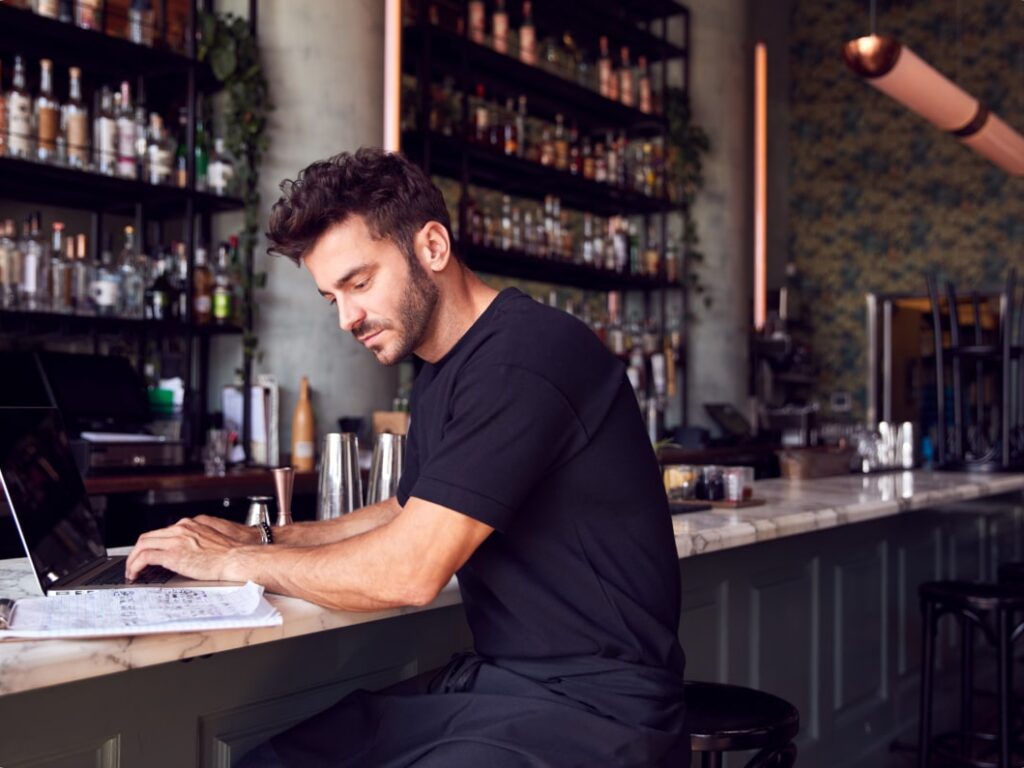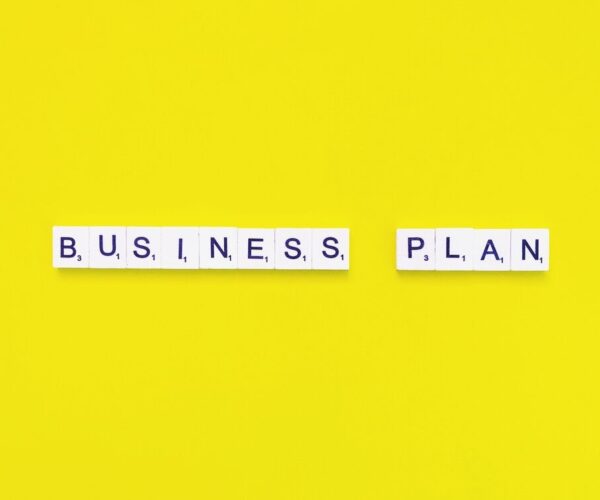What is a restaurant management plan?
A restaurant management plan is essentially a detailed business plan that encompasses all areas of restaurant development. From food costs to menu design, from floorplan to foot traffic and from hiring employees to financial projections, everything needs to be thoroughly thought out.
Starting any type of business is an exciting but stressful time. Opening a restaurant is no exception and it comes with its own set of specific challenges that need to be considered before investing all the time and money that it requires.
In order to manage risks and make sure that you are completely prepared, both financially and mentally for the challenges that are ahead of you, you need to develop a business plan to analyze internal and external factors. This will allow you to set goals and manage your expenses throughout the process of setting up your new business.
What is the purpose of a restaurant business plan?
Creating a restaurant management business plan is integral for restaurant owners but also for potential investors. Firstly, it will help you know exactly what you need to do, give you a timeline of when to do it and help you set realistic expectations or revenue growth based on projections.
Even more important than the peace of mind it is going to give you, a well thought out business plan will help you get investors on board, which most brands need to kick start their business.
As the plan will account for all important projected financial information, such as labor cost, rent fees, inventory costs, as well as targeted price points, you will be able to show investors what your business is expected to generate in the years to come and predict when it will hit the break-even point.
Ultimately, a comprehensive business plan will allow you to predict costs, set your annual budget and make a prediction of the sales that you can achieve. It can also help reduce some risks. For example, you might discover stronger competition than you thought in the market. If you reach these kinds of conclusions in advance, you will be able to adapt your value proposition and strategy which will hardly cost you.
The ultimate guide to restaurant profit margin
What should be included in a restaurant business plan?
A lot goes into creating a successful business so it can be overwhelming and difficult to determine what to include in your business plan. In order to break it down for you, we have created a list of key things you should integrate in your restaurant business plan:
Executive Summary
All business plans should begin with an executive summary. It works as an introduction to your business, giving a broad idea of what you want to achieve with your restaurant. The format of an executive summary is the same as the format of an introduction for an essay. If you think back to the essays you wrote at school, you need to introduce your ideas and draw the readers in whilst also giving them a summary of everything you are going to cover in the document.
The kinds of things that you should consider including in your executive summary are elements such as the concept of the restaurant, realistic cost expectations and the return and profit that you think you can make. Sometimes, investors do not have the time to thoroughly assess every proposal and business plan that comes through their office doors, meaning they rely on the executive summary to find the information they are looking for. You therefore want to include the most eye-catching statistics and really sell your business idea at this point.
Market Analysis
Once you have fully introduced the reader/potential investor to what your business is all about and what you want to achieve, you then need to explain how your restaurant business is going to fit into the food and beverage market and distinguish itself. The restaurant industry is one that is highly saturated so you will need to prove that there is a space for your business and highlight how it is going to survive in such a competitive landscape.
The best way to do this is by identifying your target market and conducting a comprehensive market analysis in order to identify the strengths and weaknesses of your business as well as the opportunities and threats that it may encounter. With this analysis, the company will be able to determine its attractiveness, competitive advantages and disadvantages to establish measures that guarantee its stability and profitability, both in the short and long term.
The information generated from the market analysis will help you make enlightened decisions for the present and future of your restaurant, whether they are related to supply, operational or financial matters. The benefits of a market research are multiple:
- It allows you to react quickly to market changes: The insights it provides help businesses learn about new customer segments, trends, tastes, changes in consumption habits, etc.
- It helps you optimize resources and develop appropriate strategies: With the information from the market study, you will know in more detail what your clients need or desire, and most importantly, what they are willing to pay. It also helps you develop strategies to determine whether you should raise your prices, implement a new product or service and know how satisfied your customers are with your value proposition.
Sample Menu
Arguably, the most important part of any restaurant is the food they serve so creating an impressive sample menu is extremely important. Whilst this is one of the most important aspects of your restaurant, you do not have to worry about this being the final version of your menu. However, if you are able to create a sample menu that reflects what you want to serve, you will be able to project an accurate idea of the type of restaurant you are hoping to open.
In order to appear as professional as possible, you should not just list your menu items, but actually create a mock-up version of the physical menu that will be present in your restaurant. One of the most integral things to get right when drafting your menu is pricing. It needs to be realistic and take into account the cost of inventory to prove to investors that you will be able to generate revenues.
Employees
Knowing what employees you are going to have on board might seem like a premature step, especially at this point in your business timeline. However, you should still have an idea of the staff you will need.
You should therefore include the positions you will need to fulfill such as restaurant managers, chefs, waiters, delivery drivers and more into your business plan. This is also a great opportunity to specify what you will be expecting to pay your staff and how that fits into the wider financials of your restaurant business.
Design
Your restaurant’s ideal design and aesthetics will convey a lot about the ambiance you are trying to create and the vibe you are striving for. Something as simple as a mood board or Pinterest board with ideas of what you want your restaurant to look like will be more than sufficient. You can be as creative as you want and can draw inspiration from wherever, from social media to your travels or other places you’ve visited. As long as you can capture the essence of what you want to create, the investors will understand.
Every aspect of the business’s internal and external design should be considered, from the big things such as what you want the dining room to look like, to the small things like lighting fixtures and table centerpieces. This is your chance to put your personal vision on paper.
Some key things to keep in mind when designing your restaurant are:
- Social distancing measures
- How to optimize foot traffic
- How to cater to a growing clientele of takeout
- Curbside pick-up customers
- Delivery service (will you use your own delivery fleet or deliver through 3rd party apps?)
Numbers
Obviously, numbers are the biggest selling point for investors. They want to know that they are going to get their money back and make more on top of that initial investment so it’s important to include all the costs you may have and show them that you are not a risky investment.
Working with a professional accountant will help you lay out all the initial set-up costs that you are going to incur as well as all ongoing costs, such as rent, software, inventory and staff wages, amongst other things. A financial advisor can also help you make realistic sales predictions whether it be weekly, monthly and or annually.
Marketing
With the new normal, restaurants need to rethink their marketing strategy and find innovative ways to cater to a growing number of digital-first customers. A great way to do this is to have your own custom online ordering platform and mobile app. Restaurants should also streamline their delivery service and evaluate third party delivery apps as part of their marketing strategy to determine if the costs (commissions) and impact on margins outweigh or not the benefit of these apps.
Benefits of a restaurant management plan
There are multiple benefits to creating an in-depth restaurant management plan:
- It helps determine business goals and strategies to better control the future development of the company.
- It coordinates the different factors of a business that are necessary for success.
- It helps determine the most promising business opportunities for the company as well as raise awareness of the challenges that it could face.
- It provides information to decide the type of products or services that should be offered to your target market.
- It is a key tool to get important players such as investors and suppliers on board.
- It provides a timeline of activities that helps coordinate the performance of tasks according to an established calendar.
- It encourages an optimal use of resources.
- It facilitates progress towards the most important goals of the company.
- It allows the evaluation of alternative strategies.
- It establishes the general financial framework of the company.
- It analyzes the situation of the company with respect to its most important competitors.
Ultimately, creating a comprehensive business plan will help to ensure your business gets the initial support it needs from investors and will encourage its growth in the long term. By laying out your goals and expectations, you will be able to envision the direction that your restaurant is going in and hopefully maximize its bottom line and profit.

Subscribe to our newsletter for the latest insights in restaurant management
By clicking the button above, you agree that UEAT will use your information to contact you about relevant products, content and events. You can unsubscribe from these communications at any time. For more information, see our Privacy Policy.
